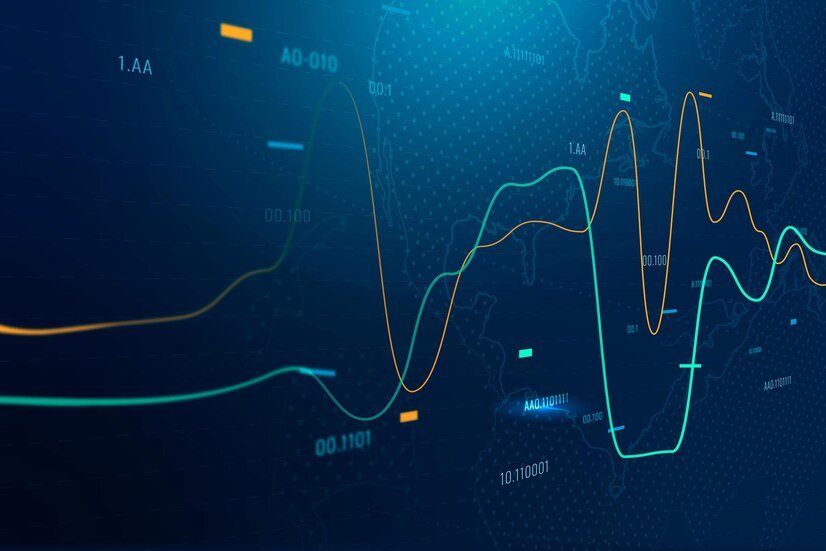Developed by M.H. Pee, the Trend Intensity Index Indicator helps to find out how sturdy the present pattern is. The stronger the pattern, the upper the possibility the worth might proceed to transfer within the present course. A dealer will often make his/her entry out there throughout a robust pattern and experience it, till the Trend Intensity Index Indicator (TII) supplies a sign of a reversal.
Trend Intensity Index Indicator (TII) was developed by M.H. Pee and it’s used to measure the power of a pattern of a sock, ETF, index, or every other tradable safety. The TII indicator makes use of RSI ideas of calculation utilized to the closing value deviations as an alternative to the closing costs. In the technical evaluation Trend Intensity Index Indicator is used to generate buying and selling indicators on assumption that the stronger present pattern is, the extra seemingly analyzed inventory (index, ETF, and forth.) will proceed to transfer within the course of the present pattern.
WE ARE FEATURED IN
TII oscillates around the 50% line within the range from zero to 100%. The TII readings above 80% are thought-about as a sign of a robust bullish pattern and TII readings under 20% are thought-about as a sign of a robust bearish trend. The motion of the Development Depth Index towards the 50% line (middle line) would counsel the weakening of the present pattern.
Technical Evaluation, Indicators, Buying, and Selling Techniques
The Trend Intensity Index Indicator visually appears to be identical to Stochastics and RSI (Relative Energy Index) indicators. Moreover, the principle ideas of technical evaluation and producing buying and selling indicators on these indicators are comparable and people merchants who labored with Stochastics and RSI mustn’t have to bother making use of evaluation to TII.
As a rule, buying and selling indicators primarily based on the Development Depth Index are generated on the crossovers of TII and its sign line(s). The most well-liked sign strains for TII are two horizontal sign strains at 20% and 80% ranges, one horizontal sign line at 50% stage or 9-period exponential transferring common (EMA) utilized to TII as a signature line. Nevertheless, it’s best to keep in mind that a conventional 20%, 80%, 50%, and 9-bar interval in addition to a conventional 60-bar interval setting for TII might not at all times be a good and best option for sharing your commerce. It’s extremely really helpful to check any indicator’s setting earlier than making use of it in actual buying and selling.
Under you might even see a quick description of the principal methods to generate indicators on the TII indicator.
First Easy Buying and selling System
The primary technique of producing indicators might be thought-about as the preferred. It’s primarily based on the crossovers of TII and two horizontal sign strains – historically at 20% and 80% ranges.
Chart 1: DJI chart with Trend Intensity Index Indicator and two horizontal sign strains
On the DJI (Dow Jones Industrials Index) chart above (chart 1) you might even see an instance of an easy buying and selling system utilizing TII to generate buying and selling indicators by the next guidelines:
- Purchase when TII raises above 20% after beforehand being under this stage.
- Promote when TII drops under 80% after beforehand being above this stage.
- Purchase again when TII raises above 80% if you briefly place because of triggering rule #2.
- Promote again when TII drops under 80% if you’re in a lengthy place because of triggering rule #1.
Second Easy Buying and Selling System
The second TII system is less complicated than the primary one but much less fashionable, and it includes just one sign line which is historically a 50% (middle) line.
Chart 2: DJI chart with Trend Intensity Index Indicator and one sign line
On the DJI chart above (chart 2) you might even see an illustration of an easy buying and selling system when indicators are generated on crossovers of TII and 50% (middle) line. The next technique assumes that TII readings above 50% are bullish and that TII readings under 50% are bearish:
- Purchase when the Trend Intensity Index Indicator strikes above 50%.
- Promote when the Trend Intensity Index Indicator drops under 50%.
Third Easy Buying and Selling System
The third TII easy system is predicated on the crossovers of TII and EMA utilized to TII as a signature line.
Chart 3: DJI chart with Development Depth Index (blue line) and EMA as sign line (pink line)
On the DJI chart above (chart 3) you might even see an implementation of a buying and selling system when indicators are generated on the crossovers of indicator and EMA utilized to it. On this buying and selling system, intervals, when TII strikes under its sign line, are thought-about bullish and intervals, when TII strikes above its sign line, are thought-about bearish. This easy system includes two guidelines solely:
- Purchase when TII crosses Sign its Line from up.
- Promote when TII crosses Sign its Line line from down.
Method and Calculations
The Development Depth Index is calculated by making use of RSI (Relative Energy Index) ideas to the closing value deviations
- Calculate Easy Shifting Common (SMA) of the closing costs:
SMA = SMA(Shut, n)
the place n is SMA bar interval - Calculate Optimistic and Unfavourable deviation of the closing costs from SMA calculated in step 1
Dev = Shut – SMA
IF Dev > Zero then posDev = Dev
IF Dev < Zero then negDev = abs(Dev) //absolute worth - Calculate the sum of Optimistic and Unfavourable deviations for the interval twice smaller than the interval used for SMA calculation. For example, if we calculated 60-bar SMA then the sum is calculated for 30 bars solely.
SDpos = sum(posDev, m)
SDneg = sum(negDev, m)
the place m is an interval twice smaller than n (interval used to calculate SMA): m = n/2. If the bar interval quantity (n) will not be even then m = (n+1)/2. - Calculate the Development Depth index
TII = 100 * (SDpos) / (SDpos + SDneg) - Calculate the second line (Sign line) as EMA utilized to TII
Sign Line = EMA(TII, okay)
the place okay is bar interval of EMA utilized to TII
First, a 60-period Easy Shifting Common must be calculated by including the closing costs through the previous 60 days and dividing the ensuing worth by 60;
Second, one must estimate the deviation of each of the final 30 closing costs from the 60-day SMA. The deviation is up, in case the closing value is above the SMA. The deviation is down, in case the closing value is under the SMA. Up deviations are estimated by subtracting the transferring common from the closing value, whereas down deviations are estimated by subtracting the closing value from the transferring common.
The 30-period Development Depth index is calculated as follows:
TII = (SD+) / ((SD+) + (SD-)) x 100, the place
– SD+ equals the sum of up deviations of the current 30 days
– SD- equals the sum of down deviations of the current 30 days
The TII is bounded between zero and 100. In case the TII exhibits a studying above 50, this means a bull pattern. In case the TII exhibits a studying under 50, a bear pattern might be current. The extra the TII distances from the 50 stage, the better the depth of the present pattern. The nearer the TII is to 100, the stronger the bull pattern. The nearer the TII is to 0, the stronger the bear pattern.
If a dealer is to make a protracted entry tomorrow, through the buying and selling session at this time the TII must be above the 80 stages. If a dealer is to make a brief entry tomorrow, through the buying and selling session at this time the TII must be under the 20 stage. The dealer ought to preserve the place lively, till the TII supplies a sign for an entry in the other way.
The Development Depth Index (TTI) indicator may help decide the power of the present market pattern. The TII varies between Zero and 100, the place usually has a price above 50 is a bullish pattern, and a price under 50 is a bearish pattern.
Configuration Choices
- Discipline: Worth or a mixture of costs to make use of as the bottom for common calculations. Doable values embody:
- Open
- Excessive
- Low
- Shut
- Adjusted Shut
- HL/2 (Excessive+Low2)
- HLC/3 (Excessive+Low+Close3)
- HLCC/4 (Excessive+Low+Shut+Close4)
- OHLC/4 (Open+Excessive+Low+Close4)
- Interval: Variety of bars to make use of within the calculations.
- Sign Interval: Variety of intervals to make use of when summing the deviations.
- Colour Selectors: Colours to make use of for graph components.
- Over Zones Enabled: Whether or not to shade the world between the plot and the horizontal overbought and oversold ranges.
- Over Purchased: Overbought amount
- Over Bought: The oversold amount
- Show Axis Label: Whether or not to show the latest worth on the Y-axis.
MT5 Indicators – Obtain Directions
Trend Intensity Index Indicator MT5 Indicator is a Metatrader 5 (MT5) indicator and the essence of the foreign exchange indicator is to remodel the accrued historical past knowledge.
Trend Intensity Index Indicator MT5 Indicator supplies a chance to detect varied peculiarities and patterns in value dynamics that are invisible to the bare eye.
Based mostly on this data, merchants can assume additional value motion and alter their technique accordingly.
The best way to set up a Trend Intensity Index Indicator MT5 Indicator.mq5?
- Obtain Trend Intensity Index Indicator MT5 Indicator.mq5
- Copy Trend Intensity Index Indicator MT5 Indicator.mq5 to your Metatrader 5 Listing / consultants / indicators /
- Begin or restart your Metatrader 5 Shopper
- Choose Chart and Timeframe the place you need to take a look at your mt5 indicator
- Search “Custom Indicators” in your Navigator principally left in your Metatrader 5 Shopper
- Proper click on Trend Intensity Index Indicator MT5 Indicator.mq5
- Connect to a chart
- Modify settings or press okay
- Indicator Trend Intensity Index Indicator MT5 Indicator.mq4 is out there in your Chart
The best way to take away Trend Intensity Index Indicator MT5 Indicator.mq5 out of your Metatrader 5 Chart?
- Choose the Chart the place is the Indicator working in your Metatrader 5 Shopper
- Proper click on into the Chart
- “Indicators list”
- Choose the Indicator and delete
Characteristics of the Trend Intensity Index Indicator
- Platform: Metatrader4
- Currency Pairs: Any
- Trading Time: Any, recommended European and American sessions
- Timeframe: H1, H4, D1











